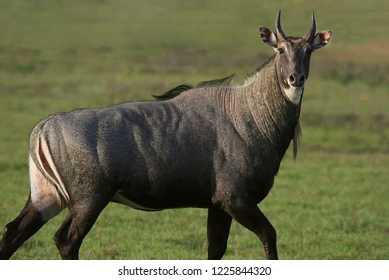Environment & Ecology
Context: The Wildlife Institute of India (WII) is working to develop immuno-contraceptive measures for population management of species that have become problematic for humans in many parts of the country.
About WII:
- It is an autonomous institution under the Ministry of Environment, Forest and Climate Change.
- It was established in 1982.
- It is based in Dehradun, Uttarakhand.
- It offers training programs, academic courses, and advisory in wildlife research and management.
About Nilgai antelope:

- It is the largest Asian antelope (family Bovidae).
- The nilgai is indigenous to the Indian subcontinent, and Hindus accord it the same sacred status as cattle (both belong to the subfamily Bovine).
- Description: Nilgai is the Hindustani word for “blue cow,” which describes the blue-grey of adult bulls.
- It has a long neck with a short upright mane, a bony narrow head, a barrel-like chest, strong legs, and high withers sloping back to the croup.
- Habitat: It lives in a lightly wooded forest, wooded grassland, scrub areas and agricultural areas and human settlements. Blue Bull usually avoids dense Forests.
- Threats: It is seldom killed or injured in retaliation in response to crop-raiding.
- The major threat to this species is habitat loss and degradation due to human encroachment, clearing of forest for agriculture and over-grazing of livestock in their habitats.
- Conservation Status:
- The IUCN Red List of Threatened Species listed it as Least Concern.
- It enjoys legal protection by virtue of the species having been included in Schedule-III of the Wildlife (Protection) Act, 1972.
Source: DownToEarth
Previous Year Questions
Q.1) Which of the following is not a bird? (2022)
- Golden Mahseer
- Indian Nightjar
- Spoonbill
- White Ibis
Q.2) Consider the following animals
- Hedgehog
- Marmot
- Pangolin
To reduce the chance of being captured by predators, which of the above organisms rolls up/roll up and protects/protect its/their vulnerable parts? (2021)
- 1 and 2
- 2 only
- 3 only
- 1 and 3
g














